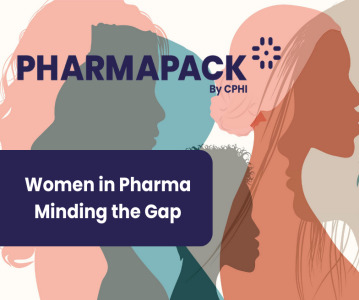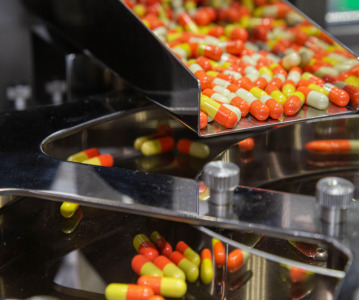APIs, excipients and formulation: the bedrock of medical innovation

Our virtual CPHI Discover event (17th-28th May) is just around the corner, full to the brim with three main content tracks. Here, we explore the major trends in APIs, Ingredients & Formulation
Advances in the pharmaceutical R&D lab are impacting the firms that make active pharmaceutical ingredient (API) and excipients and those that provide formulation development services.
Ingredients and APIs
The pharmaceutical industry’s focus on more potent, more complex products is having a profound effect on its supply chain. Its decades old reliance on suppliers for active ingredients is reciprocal: the API industry invests and innovates in response to customer demand.
One example of this in recent years is in high potency APIs. Various estimates (1) indicate the global HPAPI market will increase from its current value of around $20 billion to $26 billion by 2023 as the pharmaceutical industry increase its focus on treatments for cancer.
As a result, in recent years there has been a significant increase in firms producing high potency APIs, which has been the fastest growing segment of the ingredients sector for a decade (2). HPAPIs require special containment and handling systems, which require firms to make investment. Likewise, the need to ship such products in controlled, secure conditions calls for a dedicated and robust distribution infrastructure.
Target markets
Ongoing globalization of the pharmaceutical industry is also reshaping the API industry. On the one hand, drug company efforts to access emerging markets is increasing demand for ingredients.
Africa is a good example. Although pharmaceuticals are currently manufactured across South Africa, Kenya, Nigeria, Algeria, Morocco and Egypt, the continent still imports over 70% of the drug actives it uses.
Similarly, Latin America holds diverse and huge potential for pharmaceutical companies and – as a result – the API sector. According to analysis published in February (3), by 2025, the high potency API market in Latin America is expected to be worth $3.52 billion, an increase of 50 percent from last year.
The progressive loss of patent protection in various markets also has implications for the API sector. As branded drugs lose protection, they become potential targets for generic competitors and the API firms that supply them.
Global API supply
Asia has been a major supplier of APIs for several decades. According to analysis (4) by the US Food and Drug Administration (FDA), 72% of APIs used in medicines sold in the country come from overseas. In the EU, analysis (5) indicates that around 66% of ingredients are made outside the continent.
This reliance on imported APIs has been a concern for industry groups and governments alike, resulting in various efforts to encourage local production.
The coronavirus pandemic has amplified these concerns particularly when – for a short period – the Indian Government banned the export of certain APIs in a bid to prevent local shortages. The ban was quickly lifted (6), however, its lasting impact is likely to be an acceleration of drug industry efforts to find alternative, local sources.
More recently (7), India banned exports of the antiviral Remdesivir (both the API and finished product), which is being made by seven manufacturers under license from Gilead.
Digitization
Another supply chain dynamic impacting the API market is the use of digital technologies (8). On the one hand, digitization is helping ingredients firms to secure supply chains and to track the flow of ingredients from the facility to wholesaler to pharmaceutical customer.
Digital technologies are also increasingly being used by API suppliers to provide their pharmaceutical industry customers with oversight of production and thereby enhanced ability to react to changing demand patterns in various global markets (9).
Formulations
The API sector is also being impacted by innovation in formulation development. The emergence of combination pharmaceutical products over the past decade has changed how actives are made and characterised.
For example, it is essential APIs in combo products have physicochemical compatibility with one another and any excipients used. In addition, it is also important the rate and extent of in-vitro dissolution and in-vivo bioavailability of the APIs is the same as for the single component formulations.
The demand for processing techniques able to produce APIs to precise specifications has prompted a wave of investment in techniques – from micronization to spray drying.
The latter technique has become increasingly popular in the production of formulations of poorly soluble APIs because it allows them to be co-processed with solubility enhancement excipients.
Nanotechnology is another example of a trend in the formulation space. The primary application has been to enhance the deliverability of APIs by improving their bioavailability, lowering their toxicity and reducing side effects (10).
Excipients
Innovation in formulation development is also having an impact on excipient suppliers. Demand for non-actives that are able to enhance the solubility of an API or the stability of the formulation on the pharmacy shelf has increased significantly (11).
For example, excipients are used in antibody-based drug formulations to enhance stability and to reduce the risk of clumping or protein-protein interactions. The challenge, according to research (12) published last year, is selecting the excipient that will perfume this role most effectively.
The use of novel processing techniques to produce new formulations has also increased the need for excipients able to withstand higher compression (13). Chitin is one of several novel compounds being examined as a potential excipient based on its compatibility with production processes that involve direct compression.
Register for CPHI Discover here and check out the agenda for details of upcoming webinars and podcasts on the theme of APIs, Ingredients and Formulation
References:
- https://www.outsourcing-pharma.com/Article/2019/04/23/HPAPI-market-to-reach-26bn-in-2023-CDMOs-need-to-gear-up-to-support-future-demands
- https://www.teknoscienze.com/Contents/Riviste/PDF/CO5_2010_RGB_45-47.pdf
- https://www.statista.com/statistics/800337/high-potency-active-pharmaceutical-ingredients-market-value-latin-america/#statisticContainer
- https://www.fda.gov/news-events/congressional-testimony/safeguarding-pharmaceutical-supply-chains-global-economy-10302019
- https://www.reuters.com/article/us-health-coronavirus-europe-medicines/eu-must-wean-itself-off-asia-for-key-drug-ingredients-idUSKBN26S1GX?edition-redirect=in
- https://www.businesstoday.in/current/economy-politics/govt-lifts-bans-on-export-of-paracetamol-apis-immediate-effect/story/405265.html
- https://www.reuters.com/world/india/india-bans-exports-anti-viral-drug-remdesivir-covid-19-cases-surge-2021-04-11/
- https://assets.new.siemens.com/siemens/assets/api/uuid:eb9e739f-1b1a-4c13-8763-51f8faafc9ac/vrph-b10013-00-7600brochurepharma144dpi.pdf
- http://brandstories.livemint.com/siemens-future-of-manufacturing/transforming-pharmaceutical-manufacturing.html
- https://www.researchgate.net/profile/Pawan-Prabhakar/publication/341591438_Nanotechnology_in_Drug_Delivery_System_Challenges_and_Opportunities/links/5fc3aecd92851c933f72d7e1/Nanotechnology-in-Drug-Delivery-System-Challenges-and-Opportunities.pdf
- https://pubs.acs.org/doi/abs/10.1021/acs.cgd.0c01351
- https://pubs.acs.org/doi/abs/10.1021/acs.molpharmaceut.0c00775
- https://www.tandfonline.com/doi/abs/10.1080/03639045.2020.1841788

Related News
-
News Pharmapack Awards 2024 Patient-Centric Design Award Winner – Dr Ferrer BioPharma
The 2024 Pharmapack Awards celebrated the best in innovation and design for the pharmaceutical packaging and drug delivery industry on January 24, 2024. -
News Women in Pharma: Minding the Gap at Pharmapack 2024
2024 marks the first year Pharmapack will host a Diversity track dedicated to bridging the gap within the pharmaceutical packaging and drug delivery sector. The track includes a panel discussion on 'Enabling Diversity in the Workplace,' focused... -
News Pharmapack Awards 2024 - Celebrating Packaging and Drug Delivery Innovation
The 2024 Pharmapack Innovation Awards ceremony celebrated the best in pharmaceutical packaging and drug delivery innovation at all levels. The awards were held on January 24, 2024 at the Paris Expo Porte de Versailles. -
News Pharmapack 2024 - From the Floor
Paris once again welcomes Europe’s leading trade show in pharmaceutical packaging and drug delivery innovation. Join our content team as Pharmapack 2024 opens its doors to leading experts and innovators in pharmaceutical packaging and drug delive... -
News CPHI Barcelona 2023: Partnering for Success – Managing Outsourcing Relationships to Optimise Manufacturing Operations
During CPHI Barcelona 2023, insightful content sessions offered attendees the chance to explore trending topics with expert speakers and panellists. Here, we summarise what the pharma industry and supply chain are talking about the most. -
News CPHI Barcelona 2023: Loading Potential – Artificial Intelligence for Pharma Manufacturing
During CPHI Barcelona 2023, insightful content sessions offered attendees the chance to explore trending topics with expert speakers and panellists. Here, we summarise what the pharma industry and supply chain are talking about the most. -
News Pharmaceutical industry supports COP28 health stance in joint statement
As COP28 takes place over this week in Dubai, UAE, several bodies in the pharmaceutical and health industries have come together to announce support of key movements in sustainability in the sector, and to recognise sustainability as a health issue.&nb... -
News CPHI Podcast Series: Start-ups take centre stage at CPHI Barcelona
The first episode of the CPHI Podcast Series since we attended CPHI Barcelona in October covers the Start-up market at the event, with expert Matthew Wise joining Editor Lucy Chard to discuss the event.
Position your company at the heart of the global Pharma industry with a CPHI Online membership
-
Your products and solutions visible to thousands of visitors within the largest Pharma marketplace
-
Generate high-quality, engaged leads for your business, all year round
-
Promote your business as the industry’s thought-leader by hosting your reports, brochures and videos within your profile
-
Your company’s profile boosted at all participating CPHI events
-
An easy-to-use platform with a detailed dashboard showing your leads and performance





.png)

